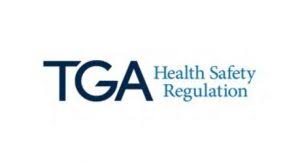The article highlights the key points related to the regulatory status of boundary products in Australia.

Table of content
The Therapeutic Goods Administration (TGA), an Australian regulating authority in the sphere of healthcare products, has published a guidance document dedicated to boundary and combination products.
The document provides an overview of the applicable regulatory requirements, as well as additional clarifications and recommendations to be taken into consideration by medical device manufacturers and other parties involved to ensure compliance thereto.
The authority also reserves the right to make changes to the guidelines, should such changes be reasonably necessary to reflect corresponding amendments to the underlying legislation.
Recommendations provided in the present guidance are based on the Therapeutic Goods Act 1989.
The Act defines what constitutes therapeutic goods, broadly categorizing them into medicines, biologicals, medical devices, and other therapeutic goods (OTGs), each with its distinct definition and regulatory requirements.
This comprehensive framework ensures that products ranging from everyday items like tampons and disinfectants to more specialized medical devices and medicines are appropriately regulated for safety and efficacy.
Classification of Therapeutic Goods
According to the guidance, the existing classification system is a key element of the respective regulatory approach, categorizing products into four primary groups. Medicines, as defined under Section 3 of the Act, include a wide range of pharmaceutical products.
Biologicals, covered under Section 32A, pertain to products derived from living organisms and used in medical treatments.
Medical devices, defined under Section 41BD, encompass a broad array of instruments, apparatuses, and machines used in healthcare.
Lastly, OTGs include various products such as tampons and disinfectants that do not fit neatly into the other categories but still require regulation due to their therapeutic application.

Boundary and Combination Products
As further explained by the authority, the regulation becomes more complex with “boundary products” and “combination products”.
Boundary products display attributes of two or more of the aforementioned categories, making determining their appropriate regulatory pathway less straightforward.
Combination products, on the other hand, incorporate multiple types of therapeutic goods, each contributing to the product’s overall therapeutic action or effect.
The present TGA guidance is intended to assist manufacturers and sponsors in understanding which regulatory pathways and requirements apply to these unique products in the Australian context.
Regulation of Boundary Products: Overview
Boundary products present a unique regulatory challenge due to their hybrid nature. The approach followed by the authority when regulating these products is based on several key factors.
The primary considerations include the product’s principal therapeutic effect, the therapeutic claims made, and the intended use as described in product information or advertising materials.
For instance, a product might incorporate medicinal substances but be intended primarily for a different use, leading to its classification as a medical device rather than a medicine.
This classification process considers the most significant component or ingredient contributing to the therapeutic effect, how the product is used under the manufacturer’s instructions, and the primary mode of action of the product in achieving its therapeutic effect.
Factors Influencing the Determination of Therapeutic Effect
According to the guidance, the determination of a product’s principal therapeutic effect requires a rigorous analysis of various factors.
These include the actual therapeutic effect of the product as demonstrated through clinical studies, the therapeutic claims made across various platforms such as websites, helplines, and promotional literature, and the context in which these claims are made.
Even product names, branding, and packaging can imply therapeutic claims. Additionally, the form of the product (e.g., capsule, tablet, injection) and its intended method of use play a crucial role in this determination process.
Categories of Therapeutic Goods
The applicable legislation sets forth the following categories of therapeutic goods:
- Medicinal Products: These products typically achieve their therapeutic action through pharmacological, chemical, immunological, or metabolic means.
An example includes substances used for diagnostic purposes, which are usually regulated as medicines due to their chemical action. - Medical Devices: The primary intended action of medical devices is generally achieved through physical means.
This can include mechanical action, serving as an impervious barrier, replacing or supporting organs or body functions, and measuring or monitoring physiological functions. Substances that exert their effect through chemical means are usually not classified as medical devices.
Examples of Boundary Products
The guidance provides specific examples to illustrate the regulation of boundary products. For instance, alcohol swabs with antiseptic claims are likely regulated as medicines, while those used solely for skin cleaning may be classified as medical devices.
Nasal decongestants using physical means for clearance are typically regulated as medical devices, whereas those with pharmacologically active ingredients are considered medicines.
Similarly, eye lubricants intended solely for lubrication are likely classified as medical devices, but those with pharmacological components for antiseptic effects are regulated as medicines.
Lastly, disinfectants used on medical devices are typically classified as medical devices themselves, while those used on other surfaces with specific bacterial killing claims might be considered OTGs.
Conclusion
In summary, the present TGA guidance provides an overview of the regulatory framework applicable to boundary products. The document highlights specific aspects associated with this category and outlines the key points to be taken into consideration by the parties involved.
How Can RegDesk Help?
RegDesk is a holistic Regulatory Information Management System that provides medical device and pharma companies with regulatory intelligence for over 120 markets worldwide. It can help you prepare and publish global applications, manage standards, run change assessments, and obtain real-time alerts on regulatory changes through a centralized platform. Our clients also have access to our network of over 4000 compliance experts worldwide to obtain verification on critical questions. Global expansion has never been this simple.
Want to know more about our solutions? Speak to a RegDesk Expert today!
–>
- SEO Powered Content & PR Distribution. Get Amplified Today.
- PlatoData.Network Vertical Generative Ai. Empower Yourself. Access Here.
- PlatoAiStream. Web3 Intelligence. Knowledge Amplified. Access Here.
- PlatoESG. Carbon, CleanTech, Energy, Environment, Solar, Waste Management. Access Here.
- PlatoHealth. Biotech and Clinical Trials Intelligence. Access Here.
- Source: https://www.regdesk.co/tga-guidance-on-boundary-and-combination-products-boundary-products/



